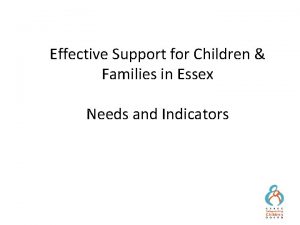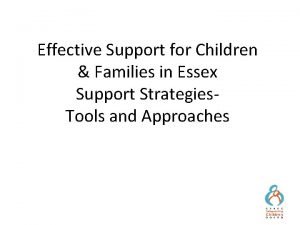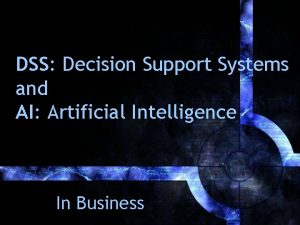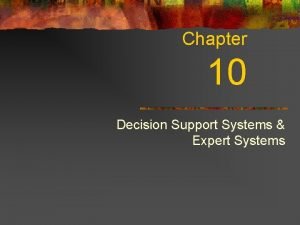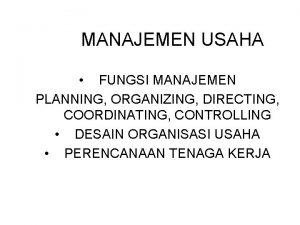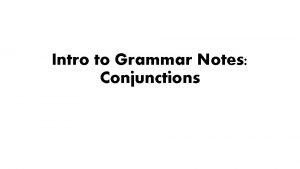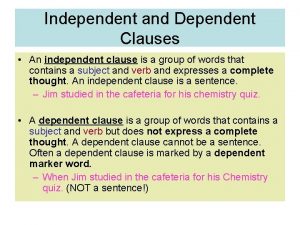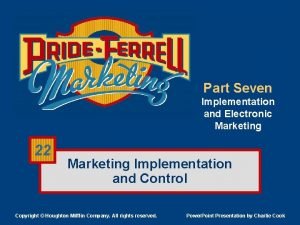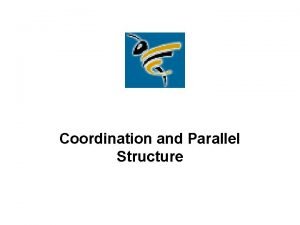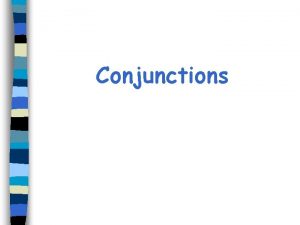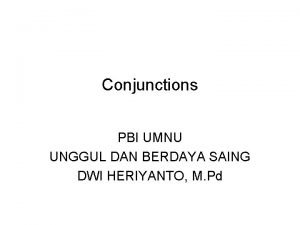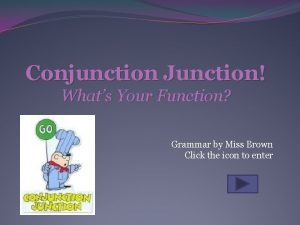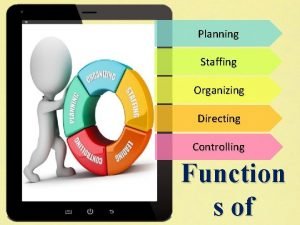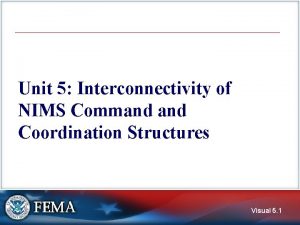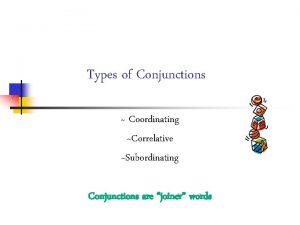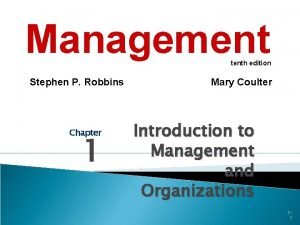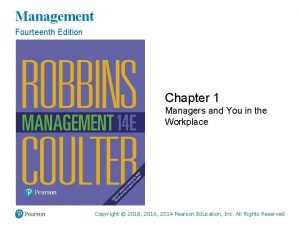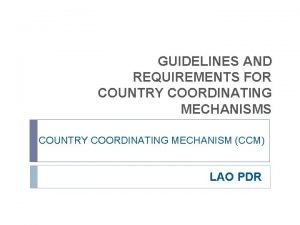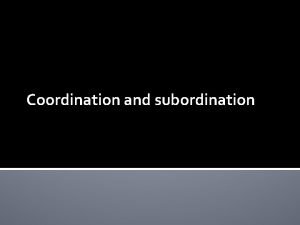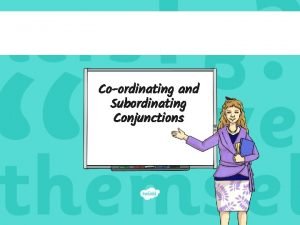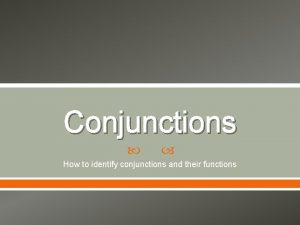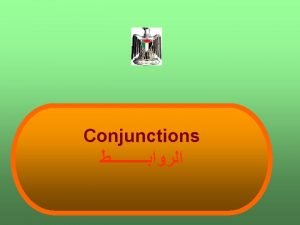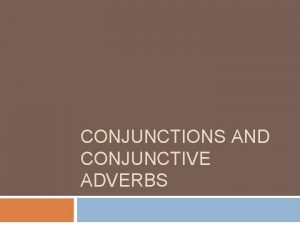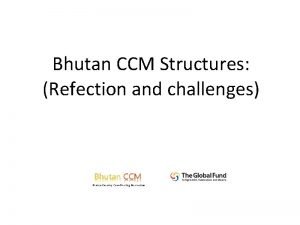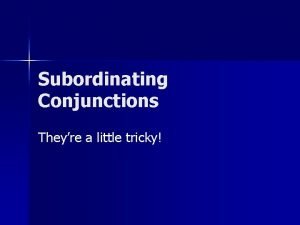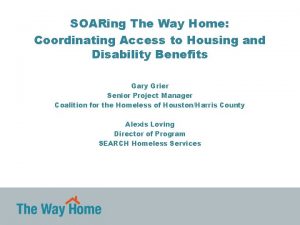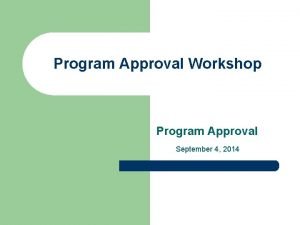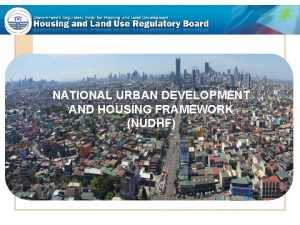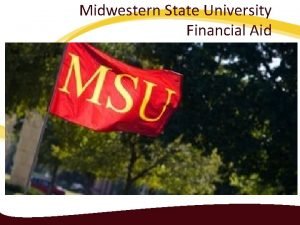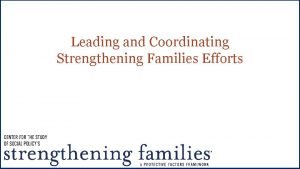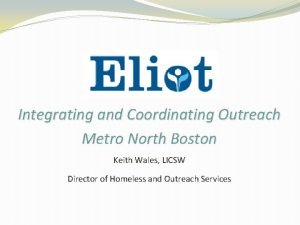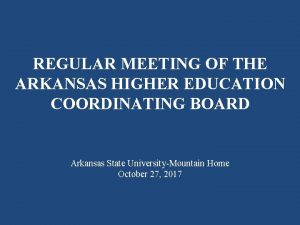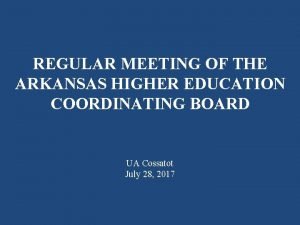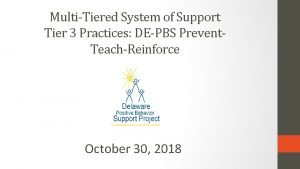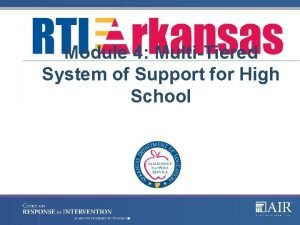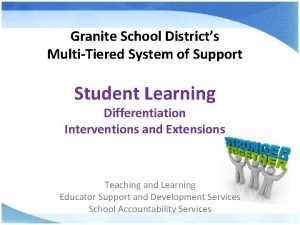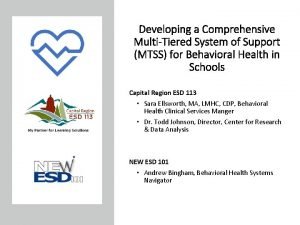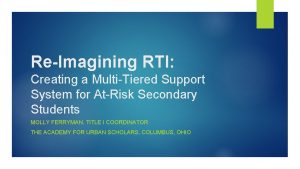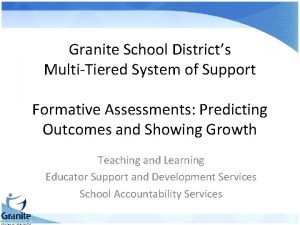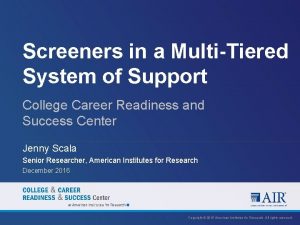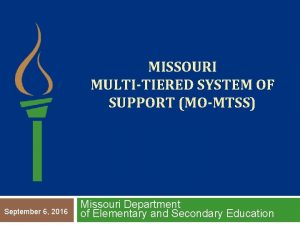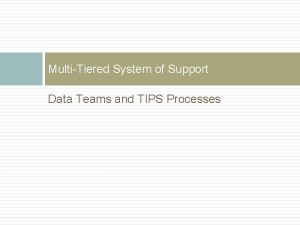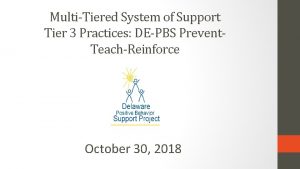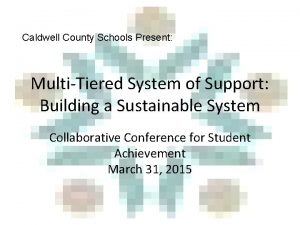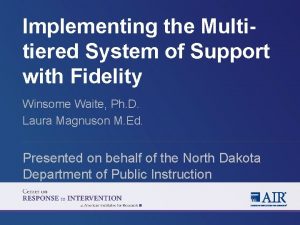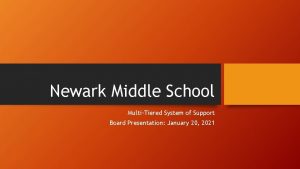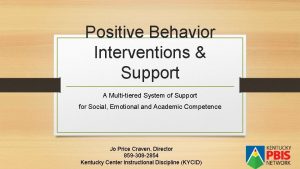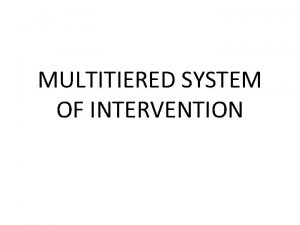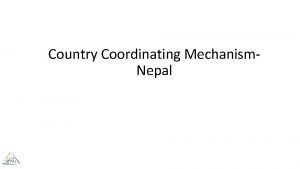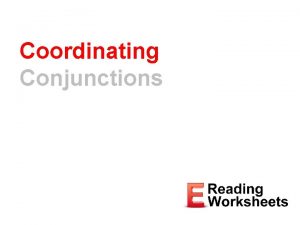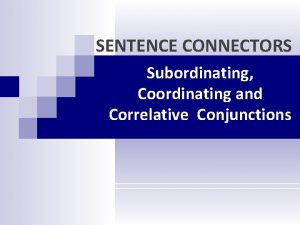Coordinating an Effective MultiTiered System of Support for























































- Slides: 55

Coordinating an Effective Multi-Tiered System of Support for Behavior Debby Boyer and Sarah Hearn, Center for Disabilities Studies Sarah Schmittinger-Kashner, Red Clay Consolidated School District June 20, 2018

Delawarepbs. org

DASL Session Survey Access 1. 2. 3. 4. Go to socrative. com Select “Student Login” In the “Room Name” box type: SXBVFR 8 Answer the questions as they appear on your screen

Overview • Understand best practices for district-level coordination of MTSS for behavior and alignment with other initiatives • Explore tools to support district leadership and integration of new & existing behavior/climate/social-emotional learning (SEL) related initiatives within an MTSS framework • Review implementation process used in Red Clay Consolidated School District

Who is in the room? 1. 2. 3. 4. 5. 6. District Leaders School Board Members School Administrators Teachers Specialists: School Psychologists, Counselors, social workers Others

Which is/are example(s) of a Multi-tiered System of Support (MTSS)? 1. 2. 3. 4. 5. 6. RTI Bullying Prevention PBS FBA/BIP Options 1 and 3 All of the above

Common Language “Organizations are groups of individuals whose collective behaviors are directed toward a common goal & maintained Effective Organizations by a common outcome” Skinner, 1953, Science of Human Behavior Common Practice Common Vision/Values Quality Leadership

Common Language: What is MTSS?

MTSS for Behavior Framework for enhancing adoption & implementation of Continuum of evidence-based interventions to achieve Academically & behaviorally important outcomes for All students

TIER III: IERIntensive, II: Supplemental, Targeted Continuum of Academic & Social Behavior Support Individualized Tier 3 for a Few: Intensive, Individualized Tier 2 for Some: Targeted for Small Groups Tier I for All: Core/Universal 10

T Family cks Set-ba ility b a s i D m r e t g Lon ents v E c i t rauma Neig h Strif borhoo e d MTSS Leader in Trauma. Informed Practices Staff Me Social Emotional Learning Responsive Classrooms Love & Logic Students Social Isolation Academic Struggles ive t a r o t s Re es Practic Solution Teams Families Bullying

MTSS for Social Competence & Academic Achievement OUTCOMES SYSTEMS What we do to support adults to implement the practices DATA PRACTICES What we do to support students Outcome data (social behavior, academic achievement), Progress Monitoring, Fidelity

Outcomes: Equitable Social and Academic Outcomes Systems: What we do to support adults School climate, discipline, academic performance, attendance, nurse visits, counselor contacts Team-based leadership, coaching support, databased decision-making protocols, developed procedures and materials for implementing assessment and practices, active supervision protocols Data: How we determine need and monitor progress Climate surveys, office disciplinary referrals, academic and behavioral screening information, attendance and tardy data, frequency of nurse/counselor contacts, fidelity checklists and observations Practices: What we do to support students 3 -5 defined school-wide expectations, procedures for teaching and acknowledging expectations, procedures for discouraging problem behaviors, procedures for using data to target needed practices.

Why use the MTSS/PBS framework for traumainformed schools? “The fundamental purpose of PBIS is to make schools more effective & equitable learning environments. ” Rob Horner, Co-Director of the OSEP Technical Assistance Center for PBIS Predictable Consistent Positive Safe

Basic MTSS Implementation Framework State Leadership • SWPBS practices, data, systems • Policy, funding, leadership, priority, agreement Internal Coaching Support School Behavior Team • 2 yr. action plan • Data plan • Leadership • Team meeting schedule District Behavior Team External Coaching Support • SWPBS • CWPBS • Small group • Individual student Student Benefit • Academic • Expectations & routines • Social skills • Self-management School Staff Team Support

Tier 1 Framework for Positive Behavior Supports and Interventions School-wide PBS Tier 1: Program Development & Evaluation Systematic Collection & Use of Multiple Data Sources Established Representative Problem-Solving Teams Ongoing Professional Development & Resources to Sustain Implementation Correcting Problem Behavior Establish System to Manage Office Discipline Referrals Support Use of Strong Classroom Management Techniques Systematic Response to Behavior Includes Problem-Solving Prevention: Implementing Schoolwide & Classroom Systems Establish Positive Relations (Student, Teacher, Parents) Establish, Teach, and Acknowledge Positive Behavioral Expectations Support a Safe School Environment Developing Self Discipline Policy Commitment to Goal of Developing Self -Discipline Social Emotional Learning (free standing or integrated within Curriculum) Students Active in Decision-making

3 -Tiered System of Support Necessary Conversations (Teams) School-wide Team Plans SW & Class-wide supports Tier 2 Team Identifies targeted student needs, Selects and supports implementation of relevant interventions, and Evaluates interventions’ use System Conversations Uses process data; evaluates overall effectiveness; does NOT involve discussion of individual students Universal Support through SW Program Tier 3 Team Uses Process data; determines overall intervention effectiveness Problem Solving Conversations Matches students to interventions and monitors progress, making adjustments as needed CICO Group interventions FBA/BSP PTR Person Centered Planning Group w. individual features Brief FBA/BSP Adapted from the Illinois PBIS Network

What do you think is the biggest barrier to implementing MTSS? 1. 2. 3. 4. 5. 6. Lack of Administrator buy-in Lack of Staff buy-in No lead person or champion Limited PD from district or state Limited funding and/or resource Competing initiatives

MTSS Capacity Building State District School PBIS/MTSS Implementation Blueprint

Components for Successful District Implementation • Leadership Team established to actively coordinate implementation efforts. Climate SEL Academics

Leadership Team Elements • Authority to address state or district implementation (e. g. , policy, professional development, evaluation, scheduling, funding). • Representation from the appropriate range of stakeholders from the local community • Completes self-assessment & develops a 3 -5 year action plan • Uses formal procedures for securing majority agreements from members of implementation unit for decision-making and policy and procedural approval and problem solving challenges, conflicts, etc. • Informs other leadership personnel on implementation outcomes (e. g. , fidelity, student outcomes, professional development).

Who might serve on a district team? Members should include individuals whose roles, responsibilities, and activities are associated with the • (a) prevention of the development and occurrence of problem behavior, • (b) development and maintenance of behavior, and • (c) management and evaluation of resources related to the provision of behavioral supports. • Examples of district-wide team members include: • District & School administration • Instruction & Curriculum • Character Education • School-wide Discipline • Special Education • Dropout Prevention

What does the leadership team do? • • • Complete a self-assessment Create a 3 -5 year action plan Establish regularly scheduled meetings Identify a coordinator to manage and facilitate Secure stable funding for efforts Develop a dissemination strategy to establish visibility (website, newsletter, conferences, TV) Ensure student social behavior is the top priority of the district Establish trainers to build and sustain school-wide PBS practices. Develop a coaching network (each school identifies a team leader to facilitate) Evaluate school-wide PBS efforts

Working Smarter Initiative, Project, Committee Attendance Committee SEL Committee Safety Committee Discipline Purpose Do Outcome ou ha r ve co pu a mm rp sim itt os i ee e? lar s Target Group Staff Involved Ar m e ou ea tc su om ra bl es e? School Improvement APlan se re th rv e ing sa co m m on e s m m itte ul taff es tiple ? Committee Mental Health Committee Wellness Committee What committees/teams can you align and integrate to support everyone’s efforts towards the district/school strategic plan and mission?

Developing a Red Clay District’s MTSS Behavior Leadership Team • Membership • Cross district-level groups (pulling from silos) • Strategic school level invitations • PBIS (training through DE-PBS Project) & Non-PBIS • Elementary & Secondary • Successful & Struggling • Meets ~4 x per year • District Team Leaders completed Implementation Blueprint Selfassessment initially to inform direction moving forward

Developing a Red Clay District’s MTSS Behavior Leadership Team • Agenda Topics • Building MTSS understanding & current district structures • Discuss desired outcomes for district MTSS efforts • Current data exploration (fidelity, tier 3 survey, etc. ) • Student case study & problem-solving discussion • District-wide MTSS expectations: required vs. flexible components

Action Planning/PATHs Process

Components for Successful District Implementation • An organizational umbrella composed of active and supportive leadership, adequate funding and workforce, and clear vision toward outcomes for aligned initiatives.

Executive Functions – Action Examples • Secure partnership agreements: commitment to 3 -5 years for systems change • Establish budget plan: securing short and long-term funding resources • Garner local political support: District Superintendents & Board • Focus on visibility: state & local presentations, multi-media, data sharing • Create clear description of alignment for initiatives with similar goals, outcomes, systems and practices

Red Clay’s Executive Functions Efforts: Strategic Plan, Workforce, Funding • Behavior Support Coaches – 2 staff • Attend Bi-monthly Behavior Support Team (BST) problem solving meetings • Behavior Coaches meet with each building team leader one a month • • Answers building specific questions Develops upcoming agendas for Tier 1 or Tier 2/3 meetings Action Planning Attends building MTSS meetings • Train on MTSS district wide (tier 1, classroom management, teacher toolbox) • Provide custom building based faculty training, PLCs, targeted teams • Classroom management consultation with teachers

Red Clay’s Executive Functions Efforts: Strategic Plan, Workforce, Funding • Behavior Analyst- 2 staff • Attend weekly Behavior Support Team (BST) problem solving meetings • Provide professional development district-wide • Support monthly psychologist meeting PD- 45 min-1 hr. • Topics include: FBA, BSP, self-care, internalizing behaviors, developing coping skill goals, how to collect meaningful data. • Consult on Tier 3 student cases • • Paper review and feedback Observation of student Consultation with building based psychologist Observation, Consultation and development of documents

Red Clay’s Executive Functions Efforts: Strategic Plan, Workforce, Funding • Building level meetings - • PBIS (School –wide), one hour per month, 6 -8 team members • PST (Tier 2/3), two meetings per month, one hour each, 6 -8 members • Systems Meeting • Student Cases • District level team leader meetings • Substitute coverage for PBIS Team Leader meetings every other month • Substitute coverage for PST Leader meetings quarterly • PST and PBS Team leader stipends yearly

Components for Successful District Implementation • A foundation for sustained and broad-scale implementation established through a cadre of individuals who can provide coaching support for local implementation, a small group of individuals who can train teams on the practices and processes of schoolwide behavior support, and a system for on-going evaluation.

Implementation Functions – Action Examples • Establish plan to evaluate for desired outcomes • Secure data access • Support collection systems • Set evaluation schedule & process • Establish district training and coaching plan • Reflect on school needs • Reflect on staff capacity • Assess staff competency/skill level across data, systems & practices

Red Clay’s Implementation Functions Efforts: Training, Coaching, Evaluation • District wide expectations around MTSS components to be established - “required elements” • Routine Team Leader meetings with embedded training to support “required elements” • Year round coaching provided to Tier 1 and Problem-solving teams • Evaluation Plan • Delaware School Climate Survey • Tier 1 monitoring • Tiered Fidelity Inventory or DE-PBS Key Feature Evaluation • Office Discipline Referral data • Yearly action planning

MTSS Tier Level Required Components Tier 3: Data, Systems & Practices in place for FEW Tier 2: Data, Systems & Practices in place for SOME Problem-solving Team Data-based Decision Making & Data Collection Functional Behavior Assessment & Behavior Support Plans Problem-solving Team Data-based Decision Making & Data Collection Relationship Building Intervention (minimum 1) Skill-based Small Group Intervention (minimum 1) Tier 1: Data, Systems & Practices in place for ALL Tier 1 Leadership Team Data-based decision making & Data Collection School-wide Expectations Teaching/Re-teaching of Expectations Major/Minor Flow Chart System for Correcting Problem Behavior Systems Meeting with Special/Student Services staff (minimum monthly) Flexible Components Individual Interventions Person centered planning PTR: Prevent-Teach-Reinforce Additional Relationship Building Interventions Additional Skill-based Small Group Intervention based on building identified needs (may be aligned with re-teaching of social/emotional curriculum) Home Matrix Use of Incentives Social/Emotional Curriculum Integrated initiatives w/in Tier 1 MTSS - Responsive Classrooms - Leader in Me - Trauma-Informed Practices

Components for Successful District Implementation • A set of demonstration schools that documents the viability of the approach within the local fiscal, political and social climate of the state/district

Red Clay’s Implementation Highlights • Cooke Elementary • Baltz Elementary • Mc. Kean High

Principal’s Role q Maintain standards regarding school innovations q Make public statement of support for selected innovation q Establish representative leadership team to lead implementation q Provide team w/ time & resources q Guide decision-making q Model & reinforce implementation with fidelity q Attend & participate in team meetings q Recognize faculty & team for efforts q Serve as community spokesperson q Monitor & provide feedback on progress & impact Adapted from Colvin & Sprick, 1999

MTSS for Behavior/Social-Emotional Learning District Level Readiness Considerations • Is there a need and desire to promote positive school climate, reduce suspensions and behavior referrals, and improve academics? • Which data sources support this? • Is there desire and commitment from district leadership to support implementation of a multi-tiered system of support (MTSS) for behavior/social-emotional learning (SEL) across all schools? • How does this connect to your district’s existing strategic plan? • Does district leadership need additional information on MTSS?

MTSS for Behavior/Social-Emotional Learning District Level Readiness Considerations • Is there commitment to developing & maintaining a 3 -5 year district-wide action plan to build & sustain the MTSS/PBS/SEL framework across all schools? • What are potential avenues for collaboration/coordination based on existing initiatives and plans within district? • How will your district work with schools interested in MTSS/PBS/SEL framework development & implementation? • Considering readiness, buy-in and need, how will schools be identified to receive training and support? • Which district representative(s) will serve as the MTSS District Coordinator(s) (i. e. , lead contact, core decision makers) for all behavior/SEL initiatives within your district? • Who is in the current leadership role for related initiatives, such as school climate & discipline, social-emotional learning, etc. ?

MTSS for Behavior/Social-Emotional Learning District Level Readiness Considerations • Is development of a district team a desired action item for the district and supported by administration? This team of stakeholders would be supported by the DE-PBS Project to lead development of action plan and drive implementation efforts. • What teaming structure would be a good match for our district context? • Do we have existing teams with similar goals with which we can integrate? • Would it make sense for our district to utilize a smaller core implementation/development team with a broader, representative team to support data-based action planning and implementation efforts? • Who are the MTSS for Behavior/SEL Coaches with allocated time & skills identified by the MTSS District Coordinator(s) to receive DE-PBS Project support and provide in-district professional development and technical assistance?

Initiative Alignment

Why Alignment is Important “One of the major variables affecting sustained implementation of effective practices is the introduction of new initiatives that either (a) compete with resources needed for sustained implementation or (b) contradict existing initiatives. ” - Mc. Intosh (2015)

In a randomized controlled group study of SWPBIS in elementary schools in Maryland, Bradshaw et al. (2010) found an average of 5. 1 programs were being introduced in each school on “character education and /or development, social-emotional or social skills, bullying prevention, drug prevention (e. g. , D. A. R. E. ), and conflict resolution and/or peer mediation” (p. 146).

Consistency matters, you can build it Common Vision/Expectations SCHOOL COMMUNITY Common Practices (USDOE OSEP PBIS TA Center, 2010) Common Language

Integration and Alignment Resources • Technical Guide for Alignment of Initiatives, Programs and Practices in School Districts from PBIS. org • Self-assessment and action planning tools • DE-PBS Module and Resources on SEL and PBS Integration • Primary Considerations and Recommendations for Integrating PBIS & SEL • MTSS Asset Mapping

Technical Guide for Alignment of Initiatives, Programs and Practices in School Districts 1. 2. 3. 4. 5. Coordinate and lead process with executive level team Define valued outcome(s) Develop inventory of current related initiatives Identify core systems features for initiatives targeted for alignment Analyze and make decisions about conflicts and duplicative elements; identify missing fidelity and outcome measures 6. Design plan for effective alignment including implementation, evaluation and PD National Technical Assistance Center on Positive Behavior Interventions and Support. (2017). Technical guide for alignment of initiatives, programs, practices in school districts. Eugene, OR: Retrieved from www. pbis. org

Alignment Self-Assessment Action Planning Tool


Tool for Identifying MTSS Core Features • Based on 6 core MTSS features (Mc. Intosh & Goodman, 2016) • Organizes information and identifies potential holes • Used to determine “fit” of each initiative

MTSS Asset Mapping: Practices and Outcomes

Behavior/Climate/SEL Initiatives How do we all fit in? • Reflect on initiative on which you work, consult or research • Note the following per initiative: – Lead organization/person – Population served – Tier 1, Tier 2, Tier 3 – Goals – Outcome & fidelity measure(s) – Types of training & coaching provided Example Name DE - PBS Lead organization DE Department of Education UD Center for Disabilities Studies Population served MTSS – Tier 1 -2 -3 Goals of initiative Create safe and caring learning environments that promote the socialemotional and academic development of all children Improve school climate Decrease office referrals, suspensions Decrease disproportionality rates Outcomes & fidelity measures School climate data ODR Systems fidelity – Tier 1 & Tier 2 Tier 3 – support plan fidelity (TATE) Type of PD & Coaching In-person workshops Online PD materials (new) Coaching through district staff

Putting it all together 1. Self-assess (OUTCOMES) 2. Conduct resource mapping (PRACTICES) 3. Establish leadership teaming capacity & readiness 4. Develop action plan (IMPLEMENTATION) 5. Monitor & adjust implementation (DATA) (SYSTEMS) Strengths What practices & systems in place? Leadership & coordination capacity Implementation fidelity Policy, funding, visibility, political support Progress monitoring Organization Needs What is level of implementation fidelity? Features Challenges What can be enhanced, merged? Training & coaching capacity Functions Successes Priorities What can be continued, added, dropped? Evaluation Local behavioral expertise

Thank you! Questions? Ideas? Sarah Schmittinger-Kashner sarah. kashner@redclay. k 12. de. us Debby Boyer dboyer@udel. edu Sarah Hearn skhearn@udel. edu Delaware PBS Project Center for Disabilities Studies University of Delaware www. delawarepbs. org
 Effective support for families in essex
Effective support for families in essex Effective support for children and families in essex
Effective support for children and families in essex Major and minor ideas
Major and minor ideas Dss vs expert system
Dss vs expert system Expert system and decision support system
Expert system and decision support system Decision categories
Decision categories Trade promotion coordinating committee
Trade promotion coordinating committee Presidential infrastructure coordinating commission
Presidential infrastructure coordinating commission Presidential infrastructure coordinating commission
Presidential infrastructure coordinating commission Fungsi coordinating
Fungsi coordinating Abbi clause
Abbi clause Independent clause adalah
Independent clause adalah Subordinating conjunction ( swabi ) in the sentence
Subordinating conjunction ( swabi ) in the sentence Joining word
Joining word Conjunction quiz
Conjunction quiz Coordinating european council
Coordinating european council Implementation schedule for business plan
Implementation schedule for business plan Parallel structure with paired conjunctions
Parallel structure with paired conjunctions Conjunctions slides
Conjunctions slides What are the seven conjunctions
What are the seven conjunctions Function of conjunction
Function of conjunction The central instrument for directing and coordinating
The central instrument for directing and coordinating Coordinating in posdcorb
Coordinating in posdcorb Planning directing controlling
Planning directing controlling Chapter 2 developing marketing strategies and plans summary
Chapter 2 developing marketing strategies and plans summary Nims command and coordination structures
Nims command and coordination structures Subordinating conjunction aaawwubbis
Subordinating conjunction aaawwubbis Management involves coordinating and overseeing
Management involves coordinating and overseeing Management involves coordinating and overseeing
Management involves coordinating and overseeing Country coordinating mechanism
Country coordinating mechanism Coordination vs subordination
Coordination vs subordination Conjunction acronym
Conjunction acronym Functions of coordinating conjunctions
Functions of coordinating conjunctions Subordinating.conjunction
Subordinating.conjunction Adverbial conjunctions
Adverbial conjunctions Bhutan country coordinating mechanism (bhutan ccm), thimphu
Bhutan country coordinating mechanism (bhutan ccm), thimphu Texas higher education coordinating board
Texas higher education coordinating board What are subordinating conjunctions
What are subordinating conjunctions Coordinating
Coordinating Texas higher education coordinating board
Texas higher education coordinating board Presidential infrastructure coordinating commission
Presidential infrastructure coordinating commission National urban development and housing framework
National urban development and housing framework Midwestern state university financial aid
Midwestern state university financial aid Complete as orações com linking words
Complete as orações com linking words Coordinating
Coordinating Metro north boston
Metro north boston Arkansas higher education coordinating board
Arkansas higher education coordinating board Marla strecker
Marla strecker Fspos vägledning för kontinuitetshantering
Fspos vägledning för kontinuitetshantering Typiska novell drag
Typiska novell drag Nationell inriktning för artificiell intelligens
Nationell inriktning för artificiell intelligens Ekologiskt fotavtryck
Ekologiskt fotavtryck Shingelfrisyren
Shingelfrisyren En lathund för arbete med kontinuitetshantering
En lathund för arbete med kontinuitetshantering Särskild löneskatt för pensionskostnader
Särskild löneskatt för pensionskostnader Tidbok för yrkesförare
Tidbok för yrkesförare
